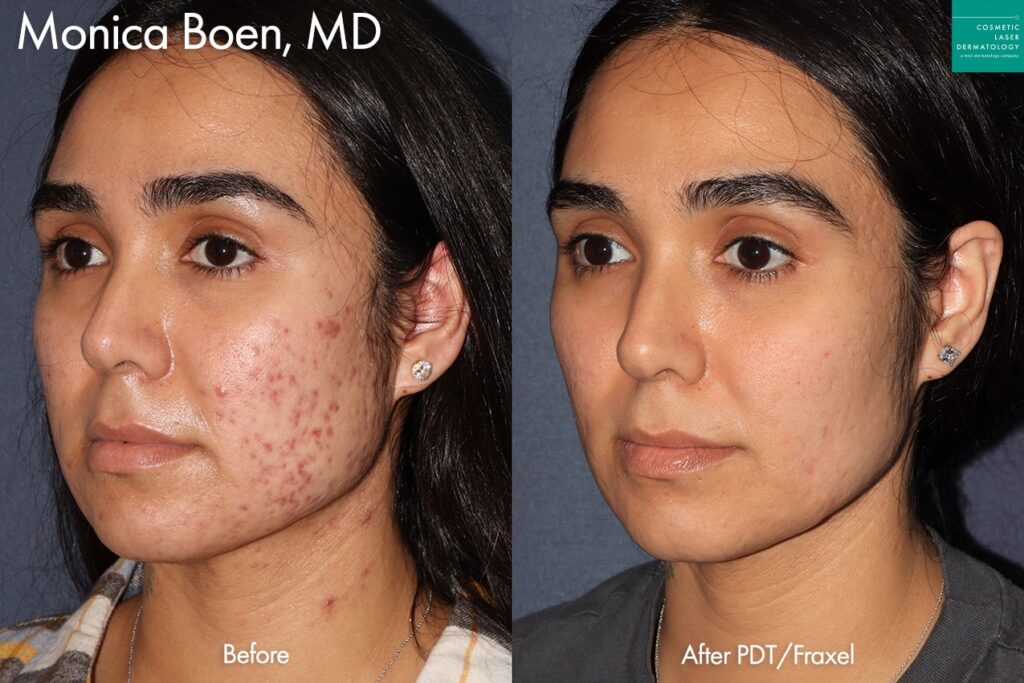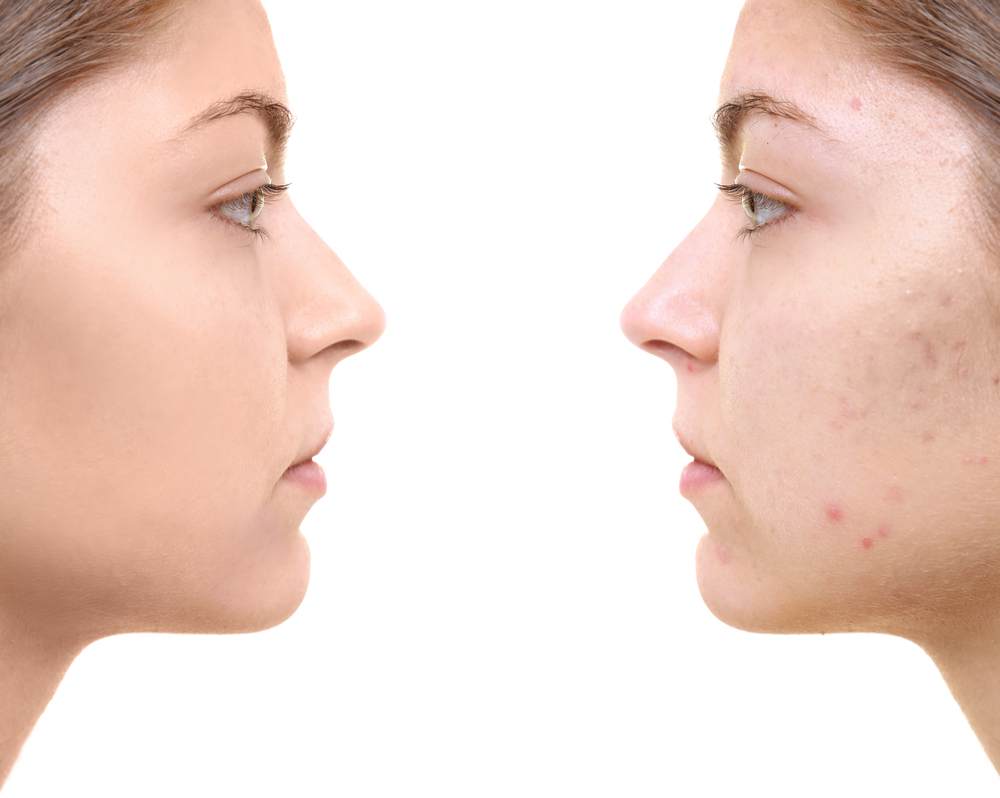Unknown Facts About Acne Scars
Unknown Facts About Acne Scars
Blog Article
Little Known Facts About Acne Scars.
Table of ContentsWhat Does Acne Scars Mean?Top Guidelines Of Acne ScarsExamine This Report about Acne ScarsGetting The Acne Scars To Work4 Easy Facts About Acne Scars Shown
Raised acne scars happen when the body creates excessive collagen and create a noticeable bump. As we age, acne scars become extra visibly due to the fact that our skin sheds collagen. Some people are more probable to see scars than others. According to Dr. Garvey, the danger increases when: A person has inflammatory acne such as acne cysts.An individual delays therapy for inflammatory acne. The longer you wait to seek therapy for acne, the higher the danger of scarring. A person selects at, squeezes or stands out acne. When popping an acne, you press bacteria deeper right into pore. If we didn't need one more reason that not to stand out a pimple, know that a mark could be the straight outcome of your activities.
Your genetic makeup plays a large function in just how much acne, and what kind of acne you may create. As we said previously, there is no magic active ingredient to take acne scars away in the blink of an eye. There are therapies readily available that aid diminish the scarring over time.
, a skin doctor may lift the mark, bringing it closer to the surface of the skin to make it much less noticeable. Resurfacing gets rid of layers of the skin, which allows the body to produce new skin cells.
The Ultimate Guide To Acne Scars
best for all kinds of acne scars. Lasers and various other light therapies can treat elevated marks securely and successfully. Therapy with a pulsed color laser (PDL) can help reduce the impulse and pain, decrease color, and flatten an elevated mark. For individuals with lighter skin, extreme pulsed light (IPL) likewise may be a treatment choice.
No adverse events were reported. After 3 needling treatments, there was renovation in the look of acne scars gradually compared with the control group, with very little pain reported. Identifier: NCT00974870 Acne scarring has been associated with significant emotional repercussions. Treatment of acne scarring stays a therapeutic challenge, with treatment strategies that include a variety of possible choices.
Nonablative and ablative lasers can be utilized to either remove or bore skin in a penalty determine pattern, with resulting neocollagenesis; just a portion of the skin is treated with each therapy, and a collection of treatments are needed to treat the whole afflicted surface area. It has been recommended that neocollagenesis and renovation of acne marks can also be accomplished using needle rollers, which use a mechanical, macroscopic method to generate little epidermal and facial perforations.
An Unbiased View of Acne Scars
Like repaint rollers, such tools can be returned and forth along the skin. Needling as a possible treatment for acne scarring was introduced by Camirand and Doucet, that explained usage of a tattoo gun to abrade acne scars. Fernandes,6 subsequently insisted that needling with a roller led to percutaneous collagen induction.
At each of these visits, needling was executed on the research treatment area, and topical anesthetic was just rubbed into the control area. Digital photographs and negative events (eg, infection, extended erythema, prolonged edema, serosanguineous drainage, bleeding, ulceration, disintegration, and pigmentation), including their period, resolution, intensity, connection to the research study treatment, and any alleviative actions taken, were recorded before each treatment.

Discomfort degree was videotaped based on a 10-point visual analog scale after the procedure. Right away after each treatment, mild hand-operated stress with gauze was looked for 5 minutes to control pinpoint bleeding and product secretion. The skin was soaked with saline swabs for an hour to help with hydration while the people were enlightened pertaining to the demand for home care.
Unknown Facts About Acne Scars
The device was after that additional cleaned by gas sanitation, saved in a closed plan, visit site and classified with the participant's name and the very first therapy date on package until the following treatment. This sanitation process was complied with to make certain a high degree of infection control in this study setting. The key end result step was the measurable international scarring grading system, created by Goodman and Baron.
Two blinded skin specialists (S.H. and M.P.) independently ranked individuals' acne marks based upon standard electronic pictures obtained at standard and at the 3-month and 6-month follow-up visits. Required agreement was used to fix up ratings. Given that this was a very early pilot trial, we considered it proper to think about acne scars jointly, not separately, by various morphologic subtypes (eg, rolling, boxcar, ice pick, and so forth).
and M.P.) did not get involved in randomization or treatment and as a result had the ability to be blinded pertaining to project. Adjustments in mean mark ratings from baseline to 3 and 6 months, respectively, were computed for the therapy and control arms. Repeated-measures evaluation of difference with pairwise comparisons with Sidak modification were performed to evaluate whether the scar score differed on therapy kind, time, or the interaction between both.
The Wilcoxon authorized rank examination was used to evaluate whether the difference in overall acne mark appearance was related to therapy kind. The study occurred from November 30, 2009, through July 27, 2010. Twenty individuals consented, and 5 left before the initial therapy. The staying 15 completed all treatments and are assessed.
Excitement About Acne Scars
At 3 months compared to baseline, the reduction in scar score in the needling group was nonsignificant (mean difference, 2.4, 95% CI, 0.01 to 4.8; P =.052) (Figure 3). The needling treatment was not particularly uncomfortable. The mean discomfort ranking was 1.08 of 10. Pain ratings increased a little gradually (P =.01), with week 4 discomfort scores (mean, 1.75; 95% CI, 0.90-2.60) substantially greater than week 2 (mean, 0.78; 95% CI, 0.40-1.20) and week 0 (mean, 0.71; 95% CI, 0.40-1.00).
When asked to estimate the discomfort experienced throughout and in the days after their procedure, individuals generally reported no pain (acne scars). Most participants were really satisfied with their procedure, responded indeed when asked if they would do this procedure again to deal with additional scars, and stated they would suggest needling to their friends
Light transient erythema and edema, which were not classified as adverse events and therefore not formally tracked, were consistently observed by the detective (M.A.) and reported by individuals after treatments. This study discloses some improvement in acne scars after a series of 3 treatments of needling. There is a statistically significant enhancement in such marks in the treatment group from standard to 6 months and no considerable renovation during this period in the control team.

Report this page